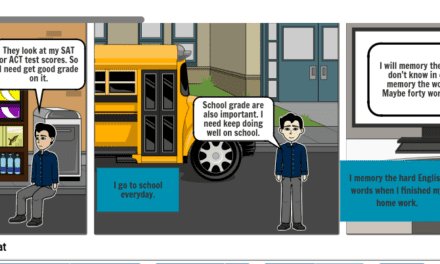
Evaluating Materials for Online Conversational English Courses

Teaching online has become a required skill for many teachers. Teaching a foreign language online comes with unique obstacles, especially when students are located across the globe. I recently had the opportunity to act as co-presenter for a webinar series titled “Teach English Online to Chinese Students” supported by the Regional English Language Office.
As a presenter, I demonstrated using a checklist of questions focused on evaluating the value of a text being used in an oral English course. The checklist is meant to guide teachers as they think through the task of choosing the best learning materials for their students. Teachers are asked to consider the following list of ten questions and statements:
Evaluating Materials Checklist
1. Is the text available online?
2. Is the text a communication focused book?
3. Is the intended context English as a Foreign Language?
- The purpose of EFL curriculum is to experience the language in meaningful, authentic contexts.
4. Are there other supplementary materials?
Examples: student websites, videos, printable worksheets, etc.
5. Information flows in an orderly manner
- Example: use organizing tools (e.g., a table of contents, a map, or headings), and avoids the use of unrelated elements that are potentially ineffective, overpowering, or redundant
- Clear information paths which help the EFL learner and teacher to understand the relationships between the texts, exercises, artwork, and photographs so that they know where to go / what to look at next.
- There is a clear and logical page/unit organization so that the teacher and the students can understand the theme, purpose and intended result.
- Headlines, chapter or unit headings and subheadings help to summarize what is to be expected in a unit.
6. Conversational grammar is explicitly taught.
- The number of grammatical points introduced in each lesson is appropriate.
- The sequencing of grammatical points is appropriate.
- The new structure is repeated in subsequent lessons for reinforcement.
The number of grammar items introduced in each unit is the same.
7. Conversational vocabulary is explicitly taught.
- The vocabulary load (i.e., the number of new words introduced in each lesson) is reasonable for the students of that level.
- The new vocabulary is repeated in the subsequent lessons for reinforcement.
- The number of vocabulary items introduced in each unit is the same.
8. Activities are challenging, interesting, and appealing for the intended learners
- The activities in the textbook are interesting for the students.
- There is an adequate treatment of activities which promote meaningful language use (as opposed to mechanical exercises).
- The activities provide a variety of interaction opportunities (group work, pair work etc.)
- The activities in the textbook promote critical thinking (i.e., analysis, synthesis, interpretation).
- There is an adequate number of activities for practicing the language (vocabulary, grammar) in the textbook.
- The activities are appropriate for the level of the students.
9. The textbook contains enough visual materials to help students understand the text.
- Examples: photographs, charts, or diagram
10. The text adequately represents student diversity.
- The characters in the textbook represent people from different social class, age, and occupation.
- The characters in the textbooks exist in a social network (e.g., family, peer group, workplace) and they are not isolated without any social connections.
- The characters in the textbook are realistic (life-like characters, with realistic personalities and conversational patterns).
As the teacher considers each question and statement, the material being assessed is given a numerical score that will be used to analyze the value of material being used in an English conversation course.There are 50 points possible on the materials evaluation score sheet, questions 1-4 are “yes or no” question while questions 5-10 are scored using the Likert scale. The Likert scale ranges from 1 being “strongly disagree” and 5 being “ strongly agree” with the statements in the evaluation checklist.

Once the teacher has completed the score sheet, the results of the evaluation can be analyzed using the table below:

If a material scores between 50 and 35 points, the material is considered robust enough to be used as the main course material on which to base the conversational English course. If a material scores between 34 and 20 points it likely does not contain enough resources to build an entire course, but would be an excellent resource for supplemental materials. Lastly, if a material scores 19 points or below, the material is not suitable for an English conversation course. This does not mean that the text isn’t a quality source, but would be better suited for other areas of study such as academic English, reading, or grammar practice.
























